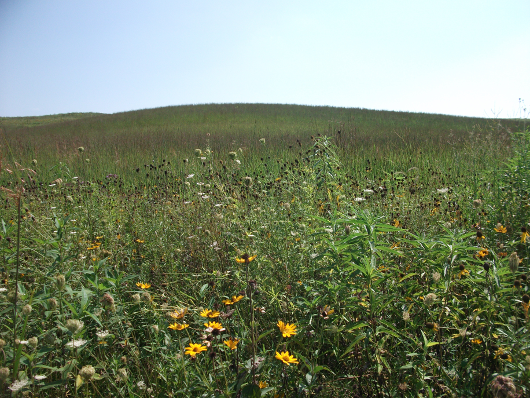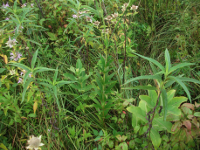USA: Preserving Prairies in the Midwest - A Conservation Challenge
28.10.13

A prairie remnant and reconstruction large enough to run bison
For thousands of years, prairie covered more than a million square miles of the North American Midwest – a vast tapestry of colours and textures made up of tall, swaying grasses and colourful herbaceous perennials, including 9 species of Echinacea, endemic to North American prairies, and Eryngium yuccifolium, used by Native Americans as an antidote to rattlesnake venom.
This diverse ecosystem flourished on rich soils with moderate rainfall; it was intensively grazed by herds of bison and deer and for more than ten thousand years was managed and maintained by Native American hunter-gathers like the Sioux, using controlled burning.But then came the European settlers and the prairie landscape was transformed - ploughed up and replaced by agricultural crops. Sadly, by the beginning of the twentieth century only scattered remnants of these once vast prairies remained in places too steep or too rocky to accommodate agricultural machinery.
In America today there is a growing interest in prairie conservation and the restoration of these almost lost icons of the natural world. Across Iowa, for example, there are some wonderful expanses of newly created prairie landscapes using seed with local provenance for authenticity, and similar projects are happening elsewhere in the Midwest and Canada.If you want to learn more about prairie conservation and reconstruction or prairie plant communities go to www.tallgrassprairiecentre.org and www.chicagobotanic.org

Photographs copyright Helen Lannon